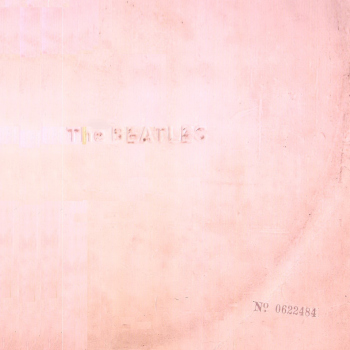 The Beatles - 'The White Album' 50th Anniversary
The Beatles - 'The White Album' 50th Anniversary
‘The Beatles’, also known as ‘The Beatles White Album’, is the ninth studio album by the English rock band the Beatles, released on 22 November 1968, was their first double-length release. Its plain white sleeve has no graphics or text other than the band's name embossed, which was intended as a direct contrast to the vivid cover artwork of the band's previous LP ‘Sgt. Pepper's Lonely Hearts Club Band’.
Although no singles were issued from The Beatles in Britain and the United States, the songs Hey Jude and Revolution originated from the same recording sessions and were issued on a single in August 1968. The album's songs range in style from British blues and ska to tracks influenced by Chuck Berry and by Karlheinz Stockhausen. Most of the songs on the album were written during March and April 1968 at a Transcendental Meditation course in Rishikesh, India, between February and April 1968. The group returned to EMI's Abbey Road Studios in London at the end of May to commence recording sessions that lasted through to mid-October. During these sessions, arguments broke out among the foursome over creative differences.
The retreat involved long periods of meditation, conceived by the band as a spiritual respite from all worldly endeavours a chance, in John Lennon's words, to “get away from everything”. Both Lennon and Paul McCartney quickly re-engaged themselves in songwriting, often meeting "clandestinely in the afternoons in each other's rooms" to review their new work. “Regardless of what I was supposed to be doing,” Lennon later recalled, “I did write some of my best songs there.” The Beatles took no drugs with them to India aside from marijuana, and their clear minds helped the group with their songwriting”.
The stay in Rishikesh proved especially fruitful for George Harrison as a songwriter, coinciding with his re-engagement with the guitar after two years studying the sitar. The Beatles left Rishikesh before the end of the course. Ringo Starr was the first to leave, less than two weeks later, as he said he could not stand the food; McCartney departed in mid-March, while Harrison and Lennon were more interested in Indian religion and remained until April.
Collectively, the group wrote around 40 new compositions in Rishikesh, 26 of which would be recorded in very rough form at Kinfauns, Harrison's home in Esher, in May 1968. Lennon wrote the bulk of the new material, contributing 14 songs. Lennon and McCartney brought home-recorded demos to the session, and worked on them together. Some home demos and group sessions at Kinfauns were later released on the 1996 compilation Anthology 3, and later on The Beatles' 50th anniversary edition. The self-titled collection of 30 songs stands as a majestic cornucopia of styles, born from one of the group's most creative periods, between 30th May and 14th October 1968, largely at Abbey Road Studios in London. Hey Jude and Dear Prudence were recorded at Trident Studios. The master was edited so that songs segued together, via a straight edit, a crossfade, or an incidental piece of music.
Lennon later said, “… the break-up of the Beatles can be heard on that album.” Of the album's 30 tracks, only 16 have all four band members performing.
The song styles include rock and roll, blues, folk, country, reggae, avant-garde, hard rock and music hall, every song is faithful to its selected genre. The rock n' roll tracks are purely rock n' roll; the folk songs are purely folk; the surreal pop numbers are purely surreal pop; and the experimental piece is purely experimental, unlike prior Beatles albums where the band was into the habit of mixing several musical genres into a single song.
The album's rare sleeve designed by pop artist Richard Hamilton, in collaboration with McCartney consisted of a plain white sleeve. The band's name, in Helvetica, was crookedly blind embossed slightly below the middle of the album's right side, and the cover also featured a unique stamped serial number, “to create”, in Hamilton's words, “the ironic situation of a numbered edition of something like five million copies”. In 2008, an original pressing of the album with serial number 0000005 sold for £19,201 on eBay. In 2015, Ringo Starr's personal copy number 0000001 sold for a world record $790,000 at auction. My personal copy bears the serial No. 0622484.
The album bore a gatefold sleeve, which also included a poster designed by Hamilton, with song lyrics on the reverse, and four photographs taken by John Kelly. The UK version also contained black inner sleeves which housed the vinyl discs.
Rating: *****
Reviewed by Denzil Rego
Denzil is a diehard music aficionado who goes gaga over vinyl. His collection of LP records runs into thousands with EPs and SPs thrown in for good measure. You will find rarities and even autographed copies in his collection. He also has a fair amount of CDs and DVDs. A track and field star in his heyday, Denzil’s other passion is a holistic environment, #ARREGOGREEN –Making Our World A Better Place.
You can connect with Denzil via his Facebook page DenzMusicDen as well as his blog of the same name; else email him on denzilrego@yahoo.com or ping him on +91 7208082112.
